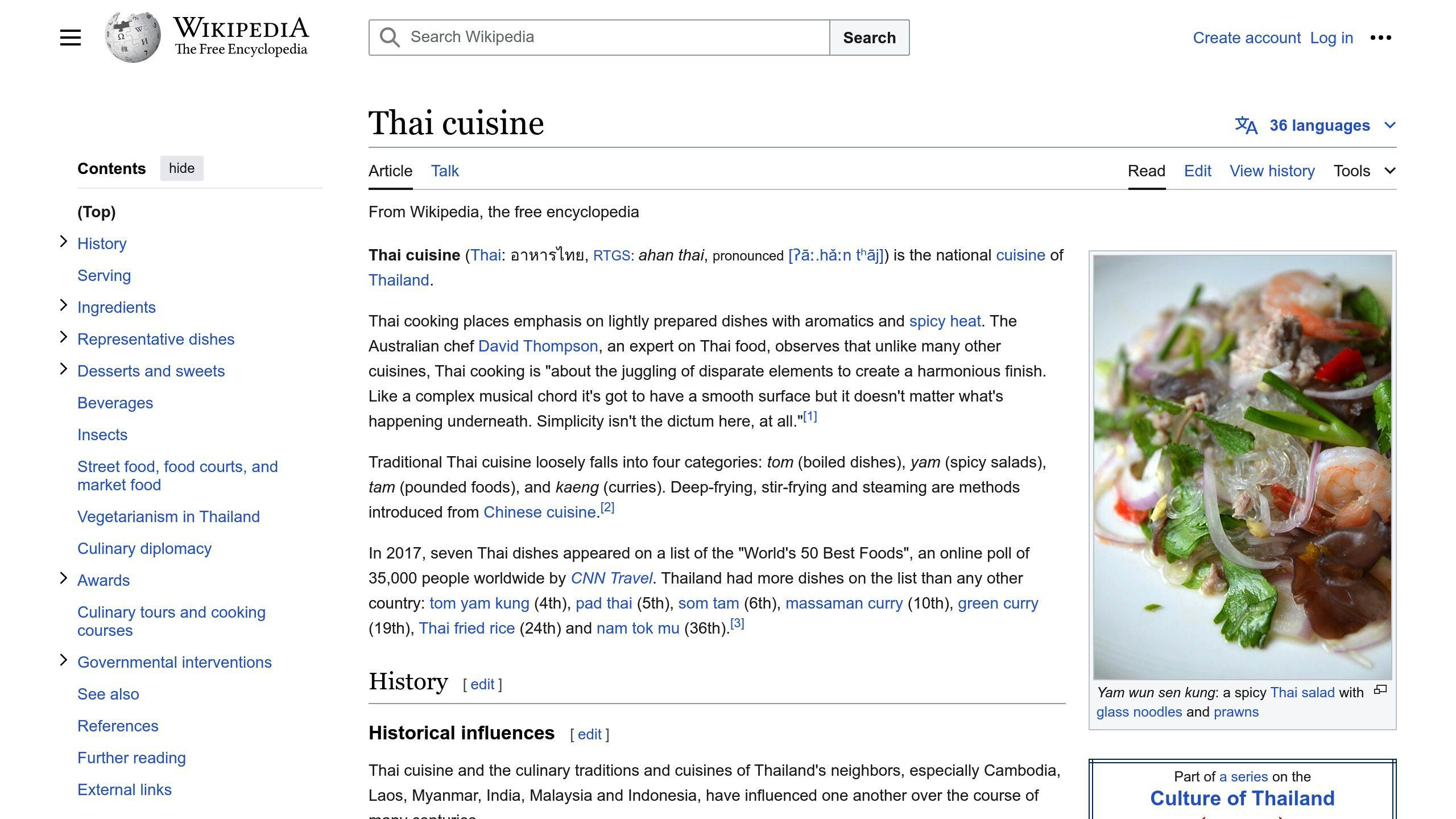May 13, 2024

Voice AI technology helps Thai restaurants overcome common challenges like language barriers, busy period bottlenecks, and order entry mistakes. By integrating voice AI, restaurants can:
Voice AI uses natural language processing and speech recognition to understand customer orders. It integrates seamlessly with existing POS systems, transmitting orders directly to the kitchen staff.
BenefitDescriptionPersonalized ExperienceRemembers customer preferences, offers tailored suggestionsFewer ErrorsAutomated order-taking minimizes mistakesCompetitive EdgeUnique ordering experience attracts new customers
To maximize benefits, restaurants should choose the right voice AI vendor, develop a customized implementation plan, and continuously update the system based on customer feedback and market trends.
Thai restaurants face unique challenges when it comes to traditional ordering systems. These issues can lead to miscommunication, errors, and a poor customer experience.
Language barriers can cause mistakes in orders. For example, a customer may ask for a dish without realizing it contains an ingredient they are allergic to. This can result in a negative experience for the customer and a loss of revenue for the restaurant.
ChallengeExampleLanguage barriersCustomer orders a dish with an ingredient they are allergic toMiscommunication between staffStaff misunderstand customer requests, leading to mistakes
Manual ordering processes can lead to bottlenecks during busy periods, resulting in long wait times and a poor customer service experience.
ChallengeExampleBusy period bottlenecksStaff struggle to keep up with orders during peak hoursLong wait timesCustomers wait for extended periods for their orders
Traditional manual ordering systems are prone to errors, which can have a significant impact on customer satisfaction and food waste.
ChallengeExampleOrder entry mistakesStaff mishear or misinterpret customer requests, leading to mistakesFood wasteIncorrect orders need to be remade or discarded, resulting in waste
By understanding these challenges, Thai restaurants can begin to explore solutions that address these issues, such as implementing voice AI technology to improve communication, reduce errors, and enhance the overall customer experience.

Voice AI technology is transforming the way Thai restaurants operate, providing a seamless and efficient solution to traditional ordering systems. By integrating voice AI with existing POS systems, Thai restaurants can streamline order-taking, reduce errors, and enhance the overall customer experience.
Voice AI technology uses natural language processing (NLP) and speech recognition to understand and process customer orders. This innovative technology allows customers to place orders using voice commands, which are then accurately interpreted and transmitted to the kitchen staff.
FeatureDescriptionNatural Language Processing (NLP)Understands and interprets customer voice commandsSpeech RecognitionAccurately recognizes and transmits customer ordersAdvanced AlgorithmsRecognizes and adapts to different accents, dialects, and languages
Integrating voice AI technology into the workflow of Thai restaurants is a straightforward process. Once implemented, voice AI can seamlessly connect with existing POS systems, allowing orders to be transmitted directly to the kitchen staff.
By embracing voice AI technology, Thai restaurants can stay ahead of the competition, improve customer satisfaction, and increase revenue. With its ability to streamline operations, reduce errors, and enhance the customer experience, voice AI is an essential tool for any Thai restaurant looking to succeed in today's fast-paced culinary landscape.
Integrating voice AI technology into Thai restaurants brings numerous advantages, revolutionizing the way orders are taken, processed, and fulfilled. By leveraging the power of voice AI, restaurants can enhance the customer experience, reduce errors, and increase operational efficiency.
Voice AI technology allows restaurants to remember customer preferences for dishes and spice levels, offering tailored suggestions and increasing customer loyalty. This personalized approach enables restaurants to build strong relationships with their customers, encouraging repeat business and positive word-of-mouth.
BenefitDescriptionPersonalized ordersVoice AI remembers customer preferences for dishes and spice levelsTailored suggestionsOffers customized suggestions based on customer preferencesIncreased loyaltyBuilds strong relationships with customers, encouraging repeat business
By automating the order-taking process, voice AI significantly reduces the risk of human error. Orders are accurately transmitted to the kitchen, minimizing the likelihood of mistakes and ensuring that customers receive their orders promptly.
BenefitDescriptionReduced errorsAutomates order-taking, minimizing human errorAccurate ordersOrders are accurately transmitted to the kitchenFaster serviceCustomers receive their orders promptly
In a competitive market, voice AI technology can be a game-changer for Thai restaurants. By offering a unique and innovative ordering experience, restaurants can differentiate themselves from competitors, attracting new customers and retaining existing ones.
BenefitDescriptionUnique experienceOffers a unique and innovative ordering experienceDifferentiationDifferentiates restaurants from competitorsAttracts customersAttracts new customers and retains existing ones
When implementing voice AI solutions in Thai restaurants, several challenges may arise. It's essential to acknowledge and address these potential obstacles to ensure a seamless integration and maximize the benefits of voice AI technology.
Protecting customer data and maintaining privacy is crucial when deploying voice AI technology. Restaurants must ensure their voice AI system is secure and compliant with data protection regulations. This includes:
Security MeasureDescriptionEncrypting transactionsSecuring customer informationSecuring customer informationImplementing robust access controls
By prioritizing data security and privacy, restaurants can build trust with their customers and maintain a positive reputation.
Another challenge is training restaurant staff to work alongside voice AI systems. This requires a significant investment in staff education and training to ensure a smooth transition. Restaurants must also consider the potential impact on staff roles and responsibilities, as well as the need for ongoing support and updates.
Training AspectDescriptionStaff educationEducating staff on voice AI system operationsOngoing supportProviding ongoing support and updates for staff
By providing comprehensive training and support, restaurants can facilitate a successful adoption of voice AI technology and minimize disruptions to their operations.
By acknowledging and addressing these challenges, Thai restaurants can overcome potential obstacles and fully leverage the benefits of voice AI technology to enhance their operations and customer experience.
Implementing voice AI technology in Thai restaurants requires careful planning and execution. To ensure a seamless integration, it's essential to choose the right partner and technology.
When selecting a voice AI vendor, consider the following criteria:
CriteriaDescriptionLanguage capabilitiesEnsure the vendor's technology supports the Thai language and dialects.Integration easeLook for vendors with experience integrating with restaurant POS systems and kitchen operations.Customer supportChoose a vendor that offers comprehensive customer support, including training and ongoing assistance.
A tailored implementation plan is crucial for Thai restaurants, considering their unique menu complexity and customer demographics. This plan should take into account:
To stay ahead in the competitive Thai restaurant market, it's essential to continuously assess and update the voice AI system. This includes:
By following these guidelines, Thai restaurants can successfully implement voice AI technology and enhance their customers' experience.

The future of voice AI in Thai cuisine looks promising. Restaurants can expect to see improvements in customer experiences, operational efficiency, and revenue.
Voice AI will play a greater role in personalized dining experiences. Algorithms will learn customer preferences and make tailored recommendations.
Voice AI will optimize kitchen operations, streamlining food preparation and reducing waste. By analyzing customer feedback and preferences, voice AI will enable Thai restaurants to refine their menus and services.
As the Thai restaurant industry becomes increasingly competitive, integrating voice AI technology will be essential for businesses to remain competitive. By embracing voice AI, Thai restaurants can differentiate themselves, improve customer satisfaction, and drive growth.
Benefits of Voice AIDescriptionPersonalized experiencesVoice AI learns customer preferences and makes tailored recommendationsOptimized kitchen operationsVoice AI streamlines food preparation and reduces wasteCompetitive advantageVoice AI enables Thai restaurants to differentiate themselves and drive growth
By adopting voice AI technology, Thai restaurants can stay ahead of the competition and provide a unique experience for their customers.

Enter your information in the form to receive a call from Loman and place an order like a customer would!